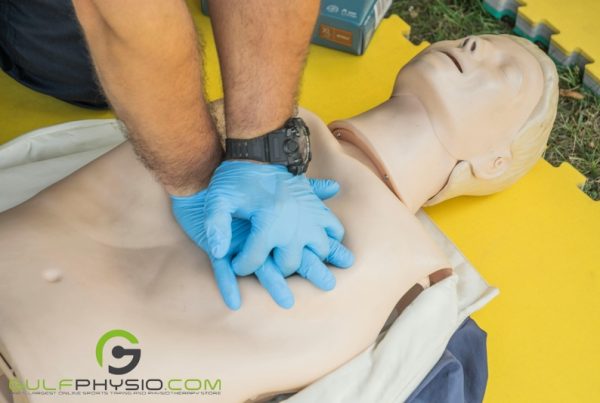When planning a trip, you would read your itinerary, pack personal items, and save tourist locations for your destination. However, exercising during plane trips should be more noticed.
This is very important because being immobile for too long on your plane seat during a flight can cause swelling, stiffness, and discomfort due to the pooling of blood in the legs, according to the World Health Organization (WHO).
Is Air Travel Bad For Your Health?
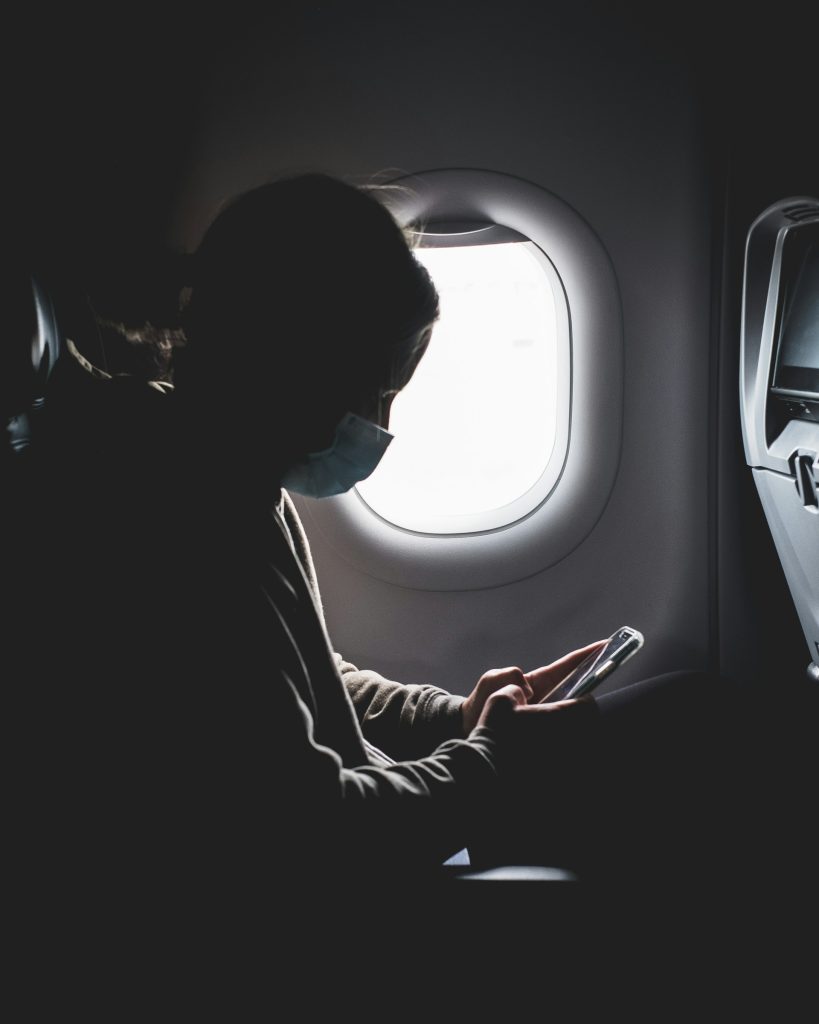
Being stagnant is one of the factors behind the development of blood clots in a deep vein, which is called deep vein thrombosis (DVT). It could happen due to prolonged inaction like during long-distance travel on a plane, car, bus, or train.
“This is why you need to stretch or perform exercises during travelling. Especially for the calf muscles, if it remains immobile, it will result in limited or poor blood circulation in your lower leg and will make you prone to DVT,” said GulfPhysio co-founder and physiotherapist Kieran Sheridan.
A WHO research indicated that the risk of DVT went up two to threefold after long-haul flights of more than four hours and other similar ways of travel.
According to another study, doing exercises will promote continuous contraction of the calf muscle, which helps decrease calf blood volume by 50% and will lessen the risk of DVT.
For most cases of DVT, WHO said the body may slowly break down the clots but there are no long-term effects.
Larger clots, meanwhile, could cause symptoms like swelling of the leg, tenderness, pain, and soreness. If it worsens, a piece of clot may break off and go into the bloodstream, which will be lodged in the lungs.
“Prolonged immobility especially in an upright position such as sitting can increase DVT risk. If the clot breaks loose and goes into the lungs, it can cause a condition known as pulmonary embolism which can result in chest pain, shortness of breath, or worse, death,” said Sheridan.
“If not addressed immediately, this could be life-threatening,” added Sheridan.
What Are Potential Side Effects of Air Travel
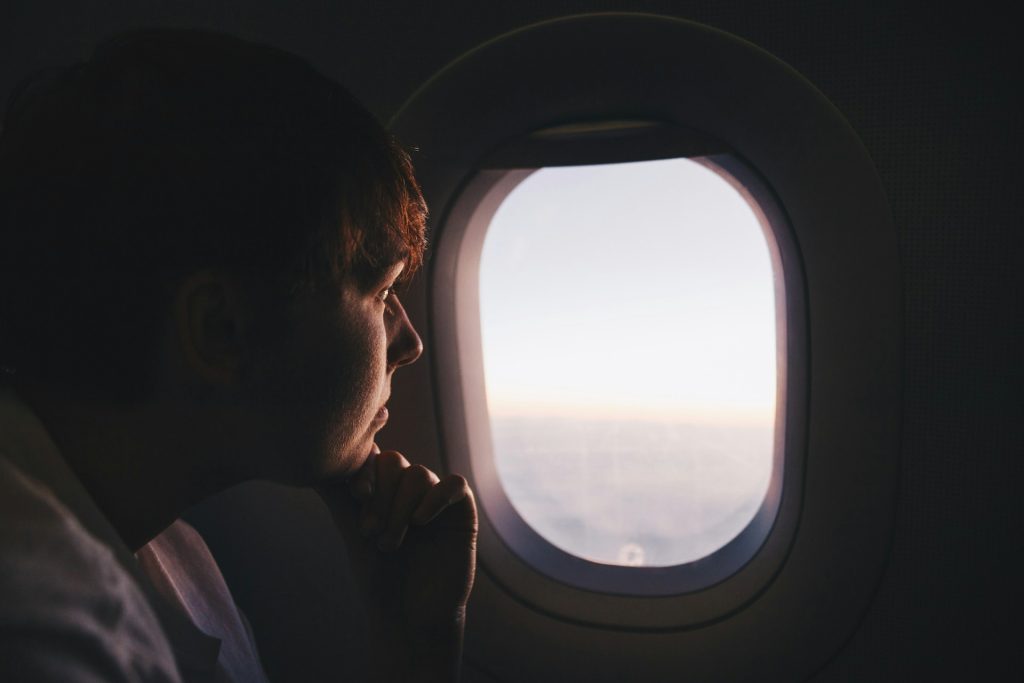
Long periods of immobility can cause other problems or musculoskeletal issues such as lower back pain or neck and shoulder pain.
“Being seated without moving your body can be difficult on your lower back due to the cramped space and poor ergonomics on the plane,” said Sheridan.
However, it’s not just the passengers but the airline pilots are also grappling with lower back pain. Research revealed that 74% of surveyed German pilots are suffering from this musculoskeletal issue.
Due to the inability to move freely whilst seated, passengers can suffer from neck and shoulder pain.
“Headrests on planes cannot fully support the passengers’ heads and necks. This will lead them to feel discomfort since they will most likely hold their necks for a long period,” said Sheridan.
Should I Work Out Before A Flight?

One way of addressing DVT and musculoskeletal problems is through physical activity before and after the plane ride.
Sheridan advised doing some easy stretches whilst waiting for your flight at the lounge or your hotel room. You can also do this at home after you have finished prepping hours before going on your ride at the airport.
The first exercise is the figure four stretch which you can do by standing on the left foot and crossing the right foot over the left knee. Then, bend the left leg and drop the hips as you feel the stretch on the outside of the right hop. Do this again on the other side.
Another exercise is the heel raises, which Sheridan said can be done by standing with the feet hip-width apart and rising onto the balls of the feet.
“This will help squeeze the backs of the legs. After that, lower back down and repeat. You can also use a chair or touch the wall whilst doing the exercise to help you with balance,” said Sheridan.
The third exercise you can try is the inchworm. This can be done by standing with the fit hip-width apart. Then, hinge at the hips and touch the toes. Walk the hands out and do a plank. After which, drop the hips and look up whilst stretching the lower back. Do this again in reverse motion and come back to stand.
How Can I Exercise On A Long Flight?
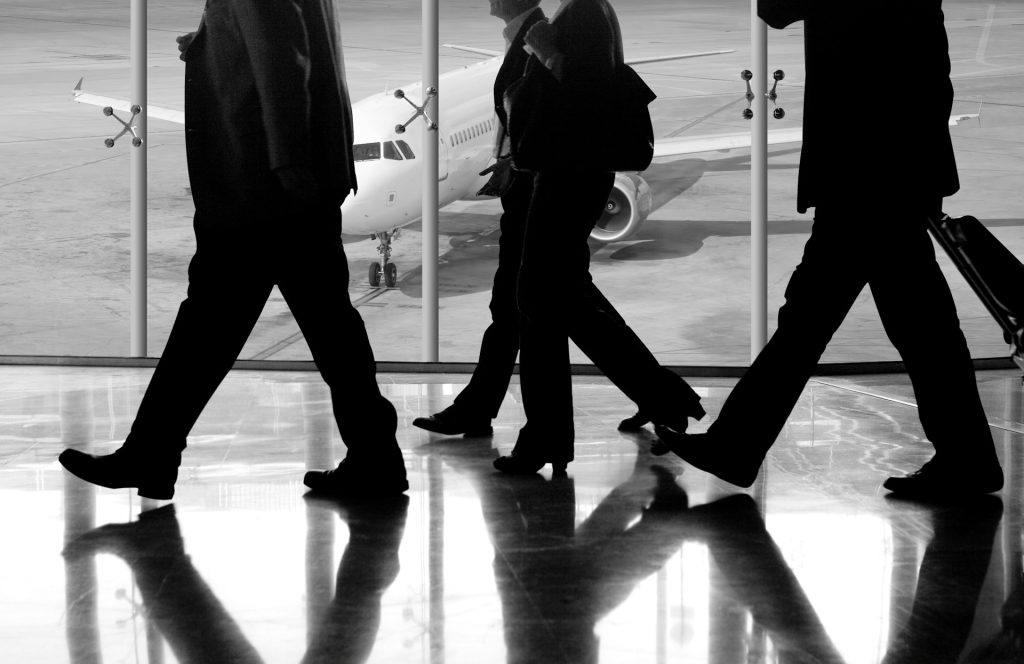
Whilst the plane seat isn’t the most comfortable place on the planet, you can counter your body pain with a few stretches and practices during your flight.
Sheridan advised doing a walk every 40 minutes or one to two hours for a bathroom break or doing stretches.
“Touch your toes to stretch the hamstrings which can help with blood circulation,” said Sheridan.
To improve knee and chest blood circulation, you can do knee-to-chest stretches by leaning forward and grabbing your knee. Gradually pull the knee toward the chest and hold it for 15 seconds.
“Do this stretch with the other knee and repeat it five times,” said Sheridan.
To address neck pain, Sheridan recommended neck roll exercises by dropping the right ear toward the right shoulder and keeping the shoulders relaxed. After which, roll the neck from right to left with the chin coming across the chest. Repeat this side to side.
Sheridan also advised doing exercises for the foot and ankles through ankle circles and foot pumps.
To do ankle circles, lift the leg and rotate the ankles clockwise and then the other way around. You can do this for the right and left leg.
For foot pumps, lift the toes with heels remaining flat on the floor then lift the heels. Do this alternately and repeat on the other foot.
Is It Good To Exercise After A Flight?
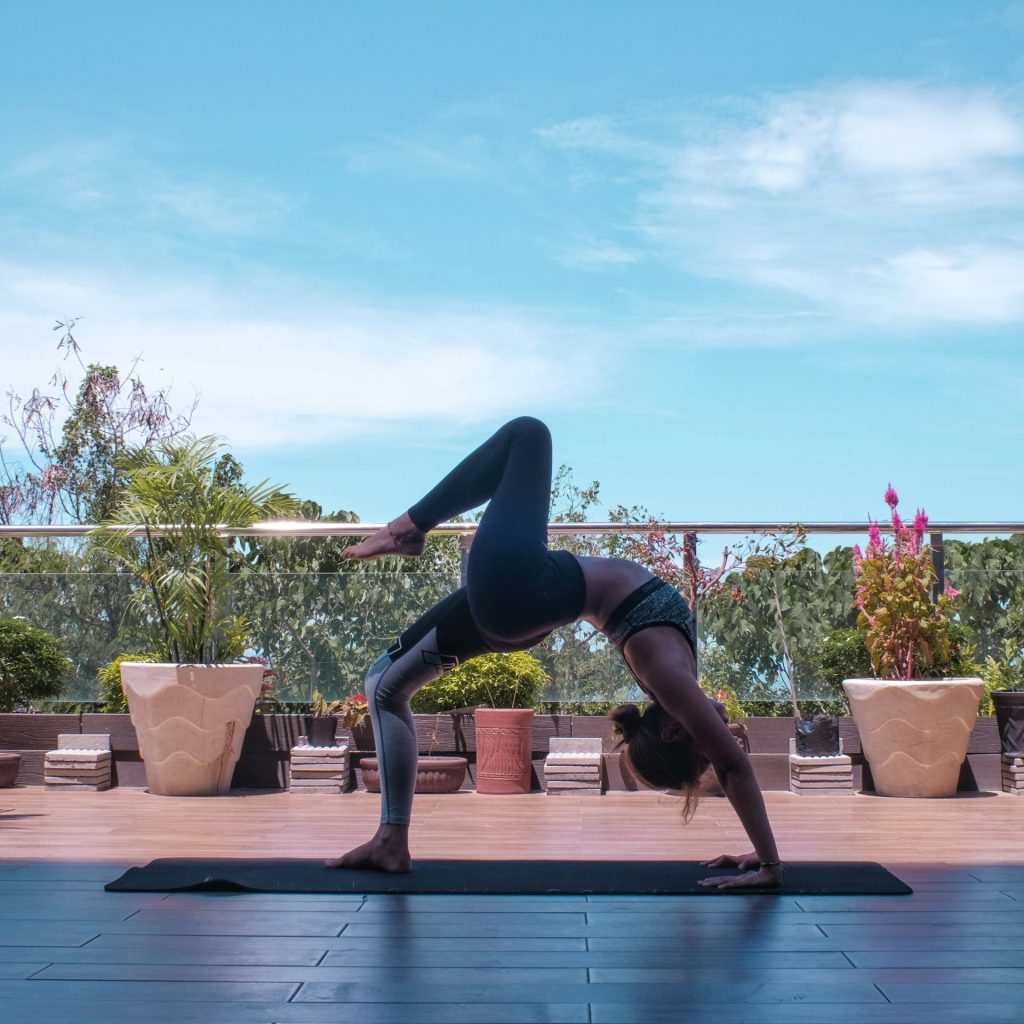
After the long-haul flight, it may be ideal to sleep or go to the first bar you find to refresh. This is not ideal especially as the body has become inactive whilst seated.
Sheridan advised to take a walk in malls or the streets of the next destination.
“You can also try checking fitness classes or there may be free bikes in parks where you can move and stretch your legs a bit,” he pointed out.
Sheridan also recommends exercising using resistance bands, which are cost-effective and easy to use.
“You can do sets of squats, hamstring, hip, and chest stretches using these resistance bands. Typical stretches can only do so much since the level of flexibility and range of motion is limited. With resistance bands, they can help extend your reach and add pressure,” said Sheridan.
Another alternative is jumping jacks, which can help the blood flow again through the body.
Chest stretches can also help address the discomfort you feel whilst hunched over or sleeping during the flight.
“You can do this by stretching your arms behind you at butt-level and fingers interlocked. With your back straight and shoulder blades together, start raising the arms until you can feel the stretch in the chest,” said Sheridan.
“Once you arrive at that position, hold it for 30 seconds,” added Sheridan.
Doing yoga after a flight will also help strengthen the body, and provide stability, cardio, and mental wellness, said Sheridan.
“There are also yoga stretches you can try to revive flexibility to your body after being cramped up whilst travelling,” said Sheridan.
How Do I Prepare My Body On A Flight?
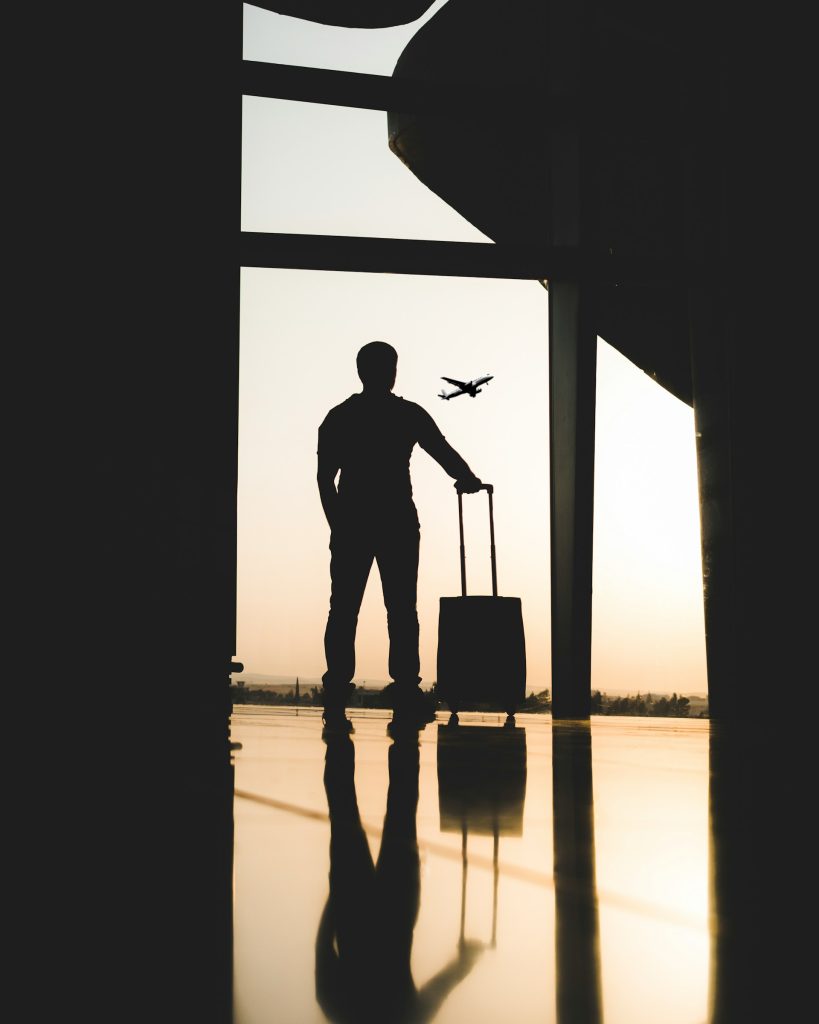
Fighting body aches can also be done by bringing comfortable tools such as a travel pillow.
“It can be cumbersome to bring but it can help add comfort and improve your sleep during your flight,” said Sheridan.
Sheridan also advised staying hydrated by filling up your water bottle after going through security processes.
“Whilst on the plane, there is low humidity which can cause dehydration. If you can’t bring water, you could get headaches and fatigue. Dehydration can also cause cramps and if you combine that with no exercise during a flight, the body will suffer so much,” said Sheridan.
Lastly, Sheridan said passengers especially the elderly should consult a health professional before travelling on long-haul flights.
“Other passengers, especially those who have pre-existing health issues to schedule a checkup before they can go on long plane rides. This will help them discuss any precautionary measures they should make to prevent health risks,” said Sheridan.
Those with pre-existing health conditions such as obesity, cancer, and blood-clotting abnormalities are at high risk of getting DVT whilst on a long-distance flight,” Sheridan also pointed out.


